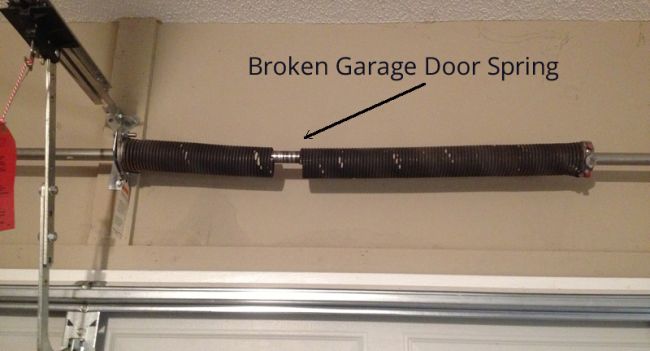Home » Inspecting Your Garage Doors
 In previous articles, we discussed ways to make the exterior of your home look nicer, for your own enjoyment and/or to improve the appearance of your home for resale. We looked at garage doors and the 2 options of replacement or re-finishing. How do we really know if our older garage doors are still in decent and safe condition?
In previous articles, we discussed ways to make the exterior of your home look nicer, for your own enjoyment and/or to improve the appearance of your home for resale. We looked at garage doors and the 2 options of replacement or re-finishing. How do we really know if our older garage doors are still in decent and safe condition?
Your garage door is likely the largest moving part of your home. There are many mechanical components and it might be a bit overwhelming to understand and assess the functional and safety related characteristics of your garage doors.
We’ve all seen saggy or cracked garage doors that belong to someone else. Inspect your garage door panels for signs of cracking, loose pieces, gaps, etc.
This is the handle that hangs from your automatic door opener. With the door down, pull the handle and ensure that it releases the automatic opener. You should now be able to open the door by hand.
Close the door and disconnect the automatic door opener by pulling the manual release. This enables you to lift your door by hand. Carefully lift the door and notice if it rolls smoothly and easily, without any resistance or strange noises. After you lift the door to the top position it should remain there. If the door is difficult to raise and lower or does not stay in the fully open position, there are safety issues which should be addressed by a professional (that’s us.)
Stand inside your garage with the door closed. Take a flashlight and carefully inspect the hardware, including cables, springs, rollers, pulleys and mounting hardware. Inspect for wear and tear, including fraying of cables, broken springs or loose fitting mounting hardware. You can also notice the sound of the door as it operates. If there are strange noises, it may indicate a hardware issue that should be addressed.
If a spring breaks, the force could send pieces of metal flying at a high velocity. To prevent this from happening, springs need to be contained. If you have a torsion spring above your door, it will already be mounted on a shaft, providing containment. If you have extension springs at the side of the door, ensure you have a containment cable that runs along the center of the spring.
Garage doors are designed to reverse if they contact an object while closing. To test this, place a 2×4 piece of wood flat under the center of the door and press the door close button. When the door reaches the 2×4, it should immediately stop and reverse to its fully open position.
Most doors installed since the early 1990’s have a photoelectric eye (sensor) system. You can test it by waving an object, such as a broom or piece of cardboard in front of one of the sensors, while the door is closing. The door should immediately stop and reverse to its fully open position.
There is a wide range of thought regarding how often you should inspect your garage doors. If you have newer doors (5 years or newer), then an annual inspection is sufficient. It’s safe to say that the older your doors are, the more often they should be inspected. If you have 20+ year old garage doors, then a monthly inspection may be warranted.
We’ve got valuable advice and friendly staff ready for you. It’s part of our serious service package.
Helpful resources



© Harbour Door. All Rights Reserved. 2024